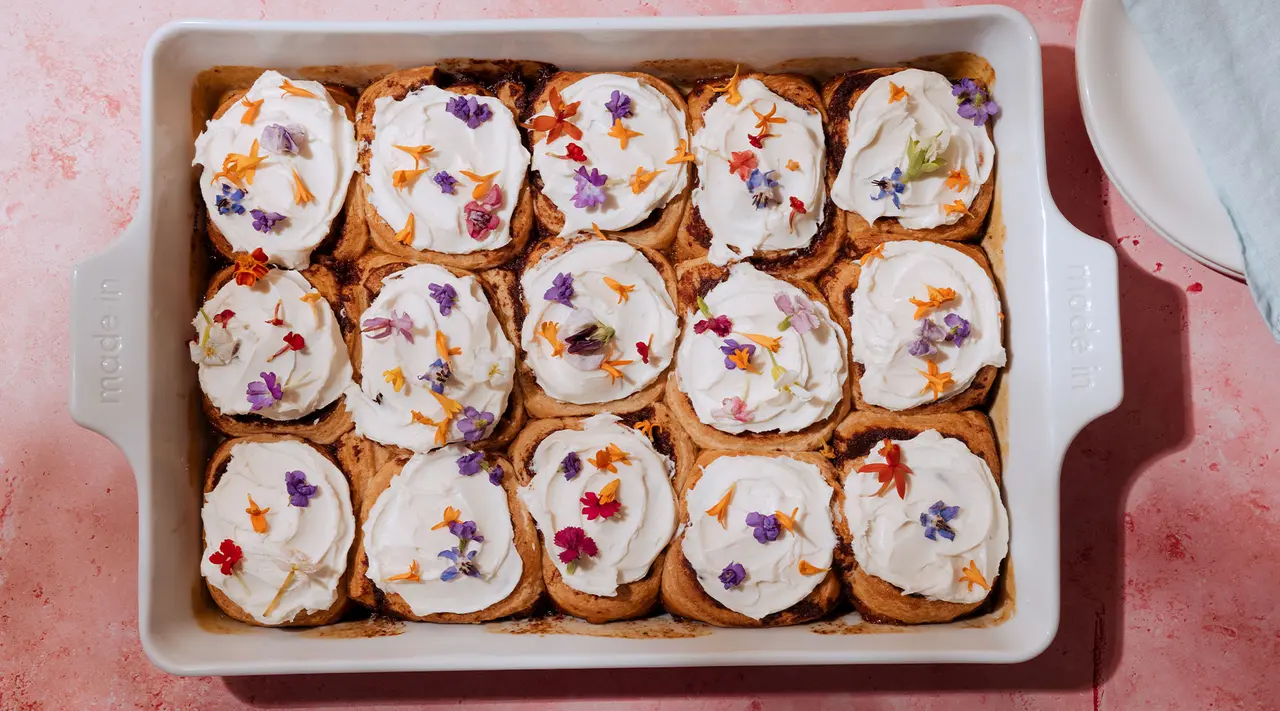Every baker knows the conundrum of trying to find the perfect Bakeware material. The one that holds up well in the oven, can securely transport your treats to bake sales or get-togethers, and looks great while doing it. While there are many different types of Bakeware, some materials are definitely superior to others.
Glass, ceramic, and Porcelain Bakeware are some of the most popular options on the market, and all have unique pros and cons. Read on for our analysis of why Porcelain Bakeware will set you up for success from the moment your bake goes into the oven until the last crumbs are licked clean.
Heating Properties
Bakeware that heats evenly will deliver the perfect crust and browning of your food every time. Being thermal-shock resistant is also very important and uncommon in some metal pan products, like aluminum bakeware. You don't want Bakeware that will crack or warp when exposed to a significant change in temperature.
Out of Porcelain, ceramic, and glass bakeware, glass is the worst conductor of heat and worst at handling thermal shock, while porcelain is the best conductor for heat and best at handling thermal shock. Porcelain is oven safe up to 650F and is both refrigerator and freezer safe. Additionally, glass is the most fragile material of the three, while porcelain is the strongest.
Winner: Porcelain
Design and Appearance
The look of your bakeware is also an important factor to consider, as Bakeware can and should double as a serving piece.
Glass bakeware is see-through, which offers a unique position as you can see how your food is baking inside the dish. However, it isn’t the most aesthetically pleasing thing to bring to your dining table. Ceramic bakeware is usually colored white or is another solid color like blue, yellow, or red. Porcelain Bakeware can only come in a classic white, with designs or rims added on after the enameling process.
Winner: Up to your individual taste, but we’re partial to the classic look of Porcelain.
Care
Bakeware that is both microwave and dishwasher safe is the most versatile. If your bakeware is microwave safe, then you can save leftovers (if there are any) in the baking dish itself and not worry about transferring them. Then when you’re ready to serve them the next day, you can just place your baking dish in the microwave, and voilà.
Dishwasher safe bakeware means there’s one less dish you need to worry about at the end of the night. But should you choose to wash by hand, your bakeware should ideally feature an enameled surface, which is naturally nonstick.
Glass pans, ceramic pans, and porcelain pans are all microwave and dishwasher safe, yet ceramic and porcelain bakeware feature enameled surfaces, which makes cleaning them by hand almost effortless.
Winner: Ceramic or Porcelain
Safety
All bakeware is equally safe to eat off of. However, bakeware that is entirely non-porous is best, as this results in extreme food safety due to the non-porous surface, resulting in a reduction in pores throughout the piece. Porcelain Bakeware is non-porous, creating the perfect nonstick surface to bake all your food in.
Winner: Porcelain
How to Choose the Best Bakeware
At the end of the day, you want Bakeware that can stand up to any task in the kitchen whether you’re creating an apple crumble or trying out a new peach cobbler recipe. While glass and ceramic Bakeware are honorable options, we believe that Porcelain Bakeware meets the mark of the best Bakeware material. It’s the strongest material that holds up the best in high heat environments, and has a classic look that lets your baked goods be the focal point.
If you find yourself looking to upgrade your bakeware collection or are itching for a new piece to try out a new recipe, check out our Bakeware Collection created with the help and guidance of Chef Nancy Silverton.























